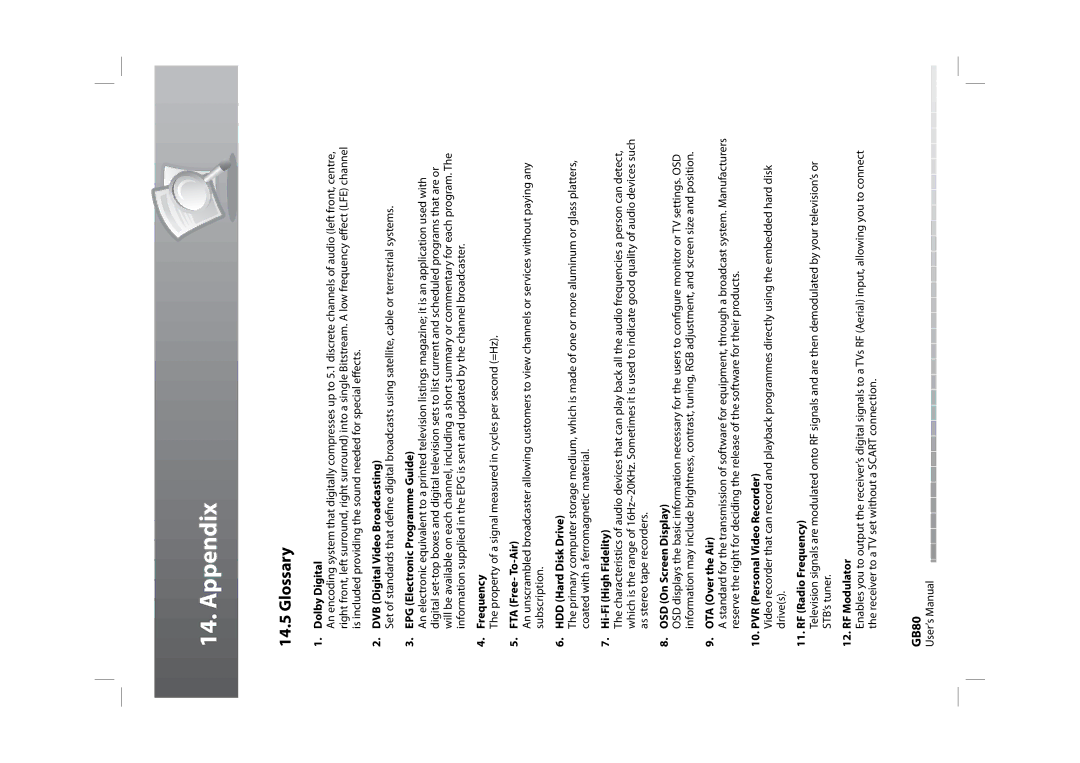
14. Appendix
14.5 Glossary
1. Dolby Digital
An encoding system that digitally compresses up to 5.1 discrete channels of audio (left front, centre, right front, left surround, right surround) into a single Bitstream. A low frequency effect (LFE) channel is included providing the sound needed for special effects.
2. DVB (Digital Video Broadcasting)
Set of standards that define digital broadcasts using satellite, cable or terrestrial systems.
3. EPG (Electronic Programme Guide)
An electronic equivalent to a printed television listings magazine; it is an application used with digital
4. Frequency
The property of a signal measured in cycles per second (=Hz).
5. FTA (Free- To-Air)
An unscrambled broadcaster allowing customers to view channels or services without paying any subscription.
6.HDD (Hard Disk Drive)
The primary computer storage medium, which is made of one or more aluminum or glass platters, coated with a ferromagnetic material.
7. Hi-Fi (High Fidelity)
The characteristics of audio devices that can play back all the audio frequencies a person can detect, which is the range of 16Hz~20KHz. Sometimes it is used to indicate good quality of audio devices such as stereo tape recorders.
8. OSD (On Screen Display)
OSD displays the basic information necessary for the users to configure monitor or TV settings. OSD information may include brightness, contrast, tuning, RGB adjustment, and screen size and position.
9.OTA (Over the Air)
A standard for the transmission of software for equipment, through a broadcast system. Manufacturers reserve the right for deciding the release of the software for their products.
10. PVR (Personal Video Recorder)
Video recorder that can record and playback programmes directly using the embedded hard disk drive(s).
11. RF (Radio Frequency)
Television signals are modulated onto RF signals and are then demodulated by your television’s or STB’s tuner.
12. RF Modulator
Enables you to output the receiver’s digital signals to a TVs RF (Aerial) input, allowing you to connect the receiver to a TV set without a SCART connection.
GB80
User’s Manual
